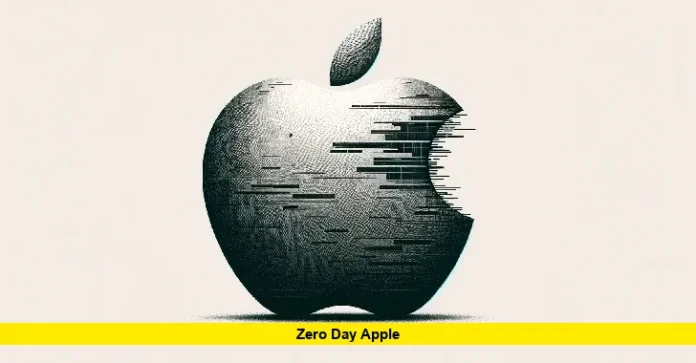Apple has urgently patched a dangerous zero day vulnerability that allowed attackers to compromise devices through malicious images. The flaw was actively exploited and targeted high-value individuals, particularly those connected to cryptocurrency. The update was rolled out last week, covering iPhones, iPads, and Macs.
The zero day vulnerability was hidden in the ImageIO framework, a system that processes image files across Apple’s operating systems. Attackers could exploit it through specially crafted images, requiring no user interaction. This made the attack extremely dangerous, as a single message or file could silently trigger a breach.
Table of Contents
What Happened
On August 20, Apple released emergency updates to fix the vulnerability, tracked as CVE-2025-43300. It was classified as a memory corruption issue, where an out-of-bounds write could allow attackers to execute arbitrary code remotely.
The updates included:
- iOS 18.6.2
- iPadOS 18.6.2
- macOS Sequoia 15.6.1
- macOS Sonoma 14.7.8
- macOS Ventura 13.7.8
Apple confirmed the flaw had already been used in targeted attacks. Victims included individuals in the cryptocurrency sector, where sensitive wallet credentials and private keys were at risk.
Key Points Summary
⚡ For quick readers, here’s a snapshot of the crisis:
- Vulnerability: CVE-2025-43300 in ImageIO
- Type: Zero-click exploit through malicious images
- Impact: Remote code execution, crypto wallet theft risk
- Fix: Updates for iOS, iPadOS, and macOS on August 20
- Urgency: Added to government threat catalogs, with a remediation deadline for agencies in early September
Why This Zero Day Was Critical
This attack was especially concerning because it required no clicks from the victim. Simply receiving a malicious image could allow attackers to seize control. That level of stealth made it ideal for advanced spyware operations.
For Apple, this marks the seventh zero day of 2025—a year that has already shown rising sophistication in threats targeting its ecosystem. While the company is fast at delivering patches, the frequency of such exploits is sparking debate about whether attackers are outpacing defenses.
The vulnerability is believed to have been part of targeted campaigns rather than widespread attacks, but its potential damage was enormous. If left unpatched, millions of users could have faced risks ranging from data theft to financial losses.
What Users Need To Do
Apple has urged all users to install the latest updates without delay. Security experts recommend:
- Update immediately: iOS 18.6.2, iPadOS 18.6.2, and macOS versions are now available.
- Stay cautious with media: Even familiar sources could unknowingly spread malicious images.
- Use stronger defenses: For cryptocurrency, hardware wallets and offline storage remain safer than software-based solutions.
- Enable automatic updates: Ensures that patches roll out as soon as Apple releases them.
For businesses, especially those handling sensitive data, it’s vital to review device fleets and confirm all systems are updated before the government’s compliance deadline in September.
Apple’s 2025 Security Landscape
This year has been a challenging one for Apple. So far, seven separate zero day exploits have been patched. That’s a record pace, highlighting both the company’s responsiveness and the scale of the threat environment.
Each case has revealed the growing skill of attackers, often tied to surveillance operations or attempts to extract valuable digital assets. Crypto wallets, government communications, and corporate secrets are prime targets.
The repeated discoveries suggest a broader trend: attackers are investing more in finding obscure flaws in Apple’s tightly-controlled platforms. Even highly polished operating systems aren’t immune when adversaries apply enough resources.
Still, Apple’s reputation benefits from its quick patching cycle. While flaws exist, fixes are rolled out rapidly, and users who update remain largely safe. The key challenge lies in ensuring adoption—many people delay updates, leaving themselves exposed.
What This Means for the Future
The latest zero day incident sends a clear message: digital trust is fragile. Even companies with vast resources and strong security frameworks can be blindsided. For users, that means a shift in mindset—from assuming devices are safe by default to expecting vulnerabilities and acting accordingly.
We can expect Apple to continue refining its defenses, possibly introducing new safeguards in upcoming system versions. At the same time, users may need to adopt better digital hygiene, such as limiting third-party apps, scrutinizing incoming files, and layering additional security measures.
Final Thoughts
The rapid patching of the Apple zero day shows both the risks of today’s digital world and the importance of staying vigilant. While Apple acted quickly, the true line of defense lies in users applying updates and treating every device as a potential target.
Staying informed and proactive is the only way forward in an age where even the most secure platforms can be breached.
What are your thoughts—do you feel confident in Apple’s approach, or are repeated zero days making you question device security? Share your perspective below.
